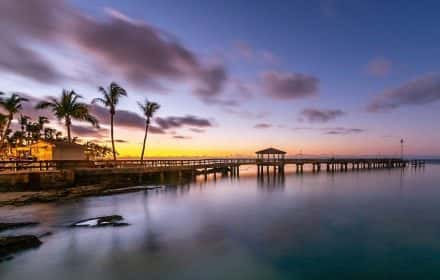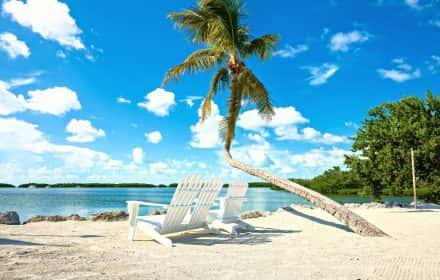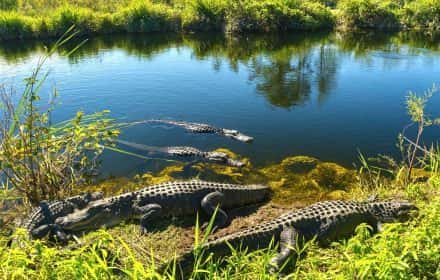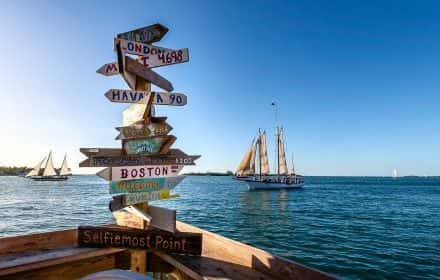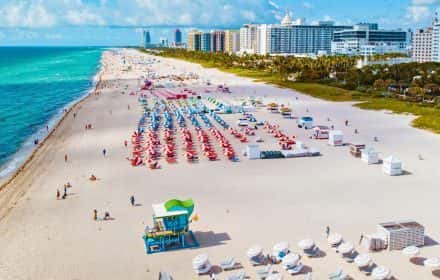This site uses affiliate links, meaning that if you make a purchase through our links, we may earn an affiliate commission.
If you are going to Florida, then you need to put Big Cypress National Preserve on your bucket list of places to see in Florida.
Big Cypress National Preserve is an incredible place beaming with extraordinary wildlife. If you want to escape the crowds and have the place pretty much to yourself, then, hands down, skip the overrated Everglades and head out to this hidden gem.
Big Cypress can be easily done on a day trip from Miami and here are 16 best things to do in Big Cypress National Preserve!
Big Cypress National Preserve
- 1. Map of Big Cypress National Preserve
- 2. 16 Things to Do in Big Cypress National Preserve
-
- 2.1. The Ghost Town of Pinecrest
- 2.2. Tree Snail Hammock Trail
- 2.3. The Florida Trail Southernmost Point
- 2.4. Culvert 30
- 2.5. Sweetwater Strand
- 2.6. Gator Hook Trail
- 2.7. Sawgrass Prairie
- 2.8. Monroe Station
- 2.9. H.P. Williams Roadside Park
- 2.10. Turner River Road
- 2.11. Upper Wagonwheel Road
- 2.12. Birdon Road
- 2.13. Ochopee Post Office
- 2.14. Kirby Storter Roadside Park and Boardwalk
- 2.15. Big Cypress Oasis Visitor Center and Boardwalk
- 2.16. Miccosukee Indian Village
Map of Big Cypress National Preserve
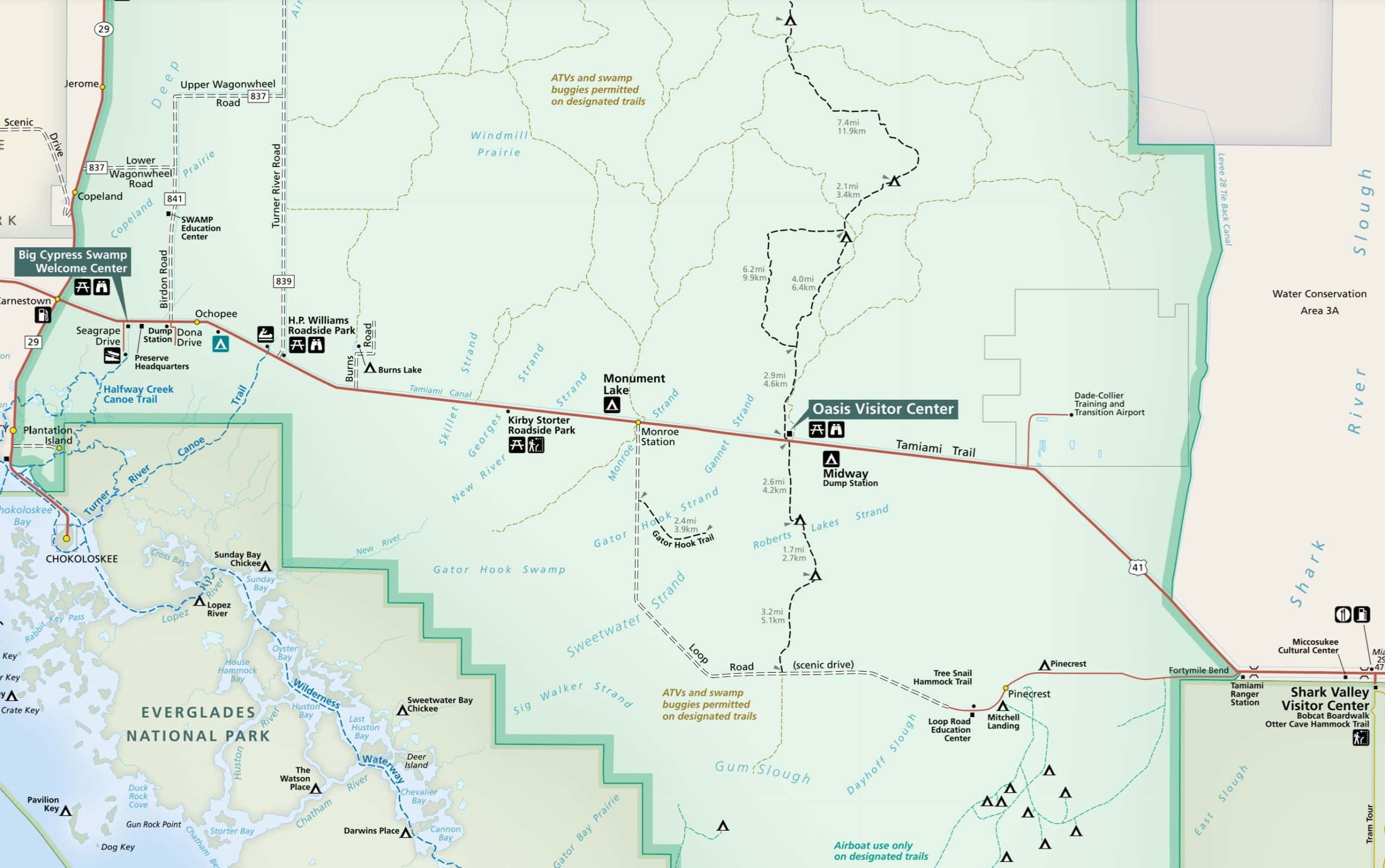
Map of Big Cypress National Preserve
Big Cypress National Preserve can be easily explored on a day trip from Miami (driving from Miami and then coming back to Miami).
My recommendation is to start with the Loop Road Scenic Drive, then explore Turner River, Upper Wagonwhell, and Birdon Road Loop Drive, and finally come back to Miami via the Tamiami Trail/U.S. Highway 41.
- 1. Loop Road Scenic Drive in Big Cypress National Preserve
- 2. Turner River, Upper Wagonwheel, and Birdon Road Loop Drive
- 3. The Tamiami Trail/U.S. Highway 41

Map of Big Cypress National Preserve / Things to Do in Big Cypress National Preserve
16 Things to Do in Big Cypress National Preserve
Loop Road Scenic Drive in Big Cypress National Preserve
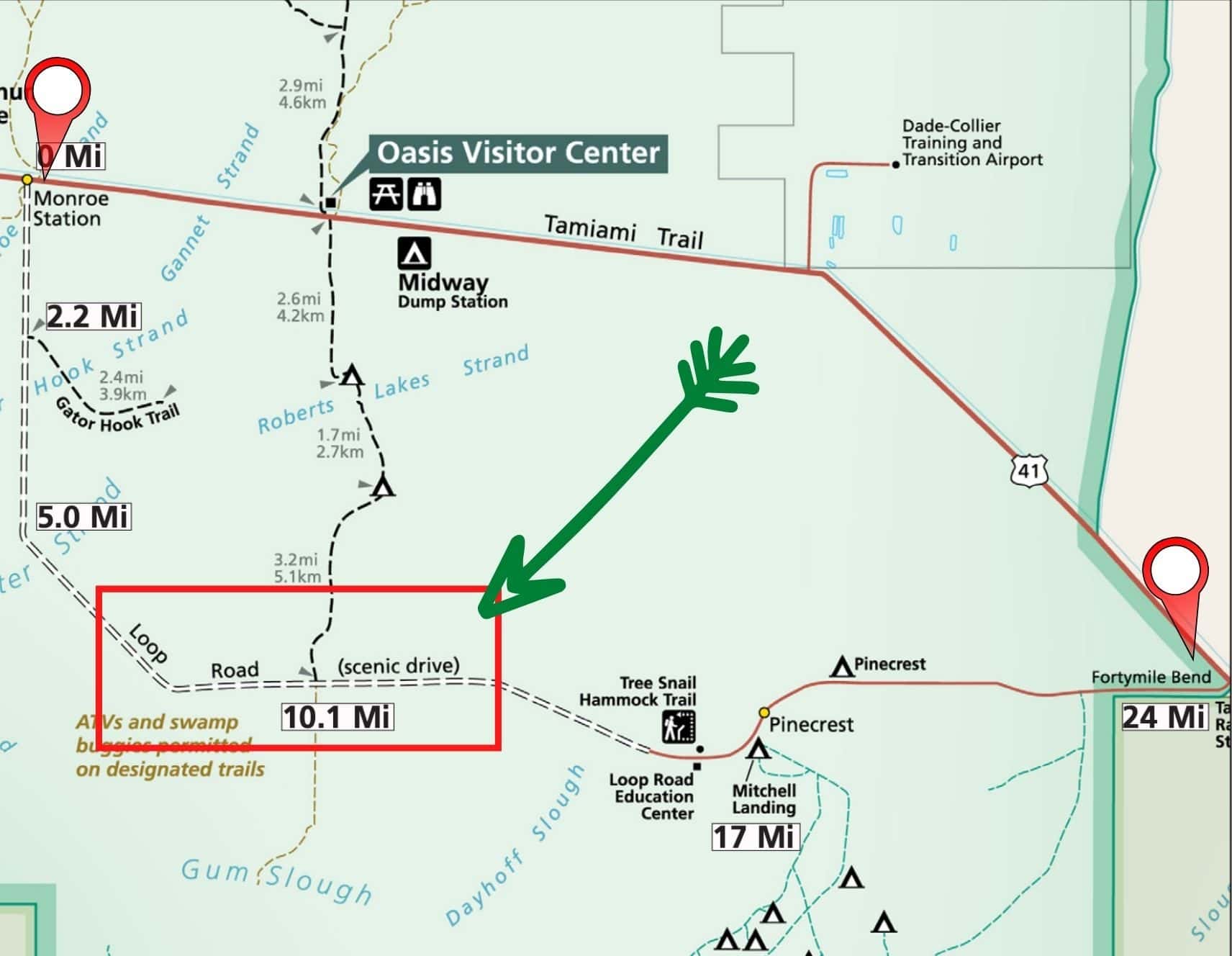
Map of Loop Road Scenic Drive in Big Cypress National Preserve. Image Source: NPS / Things to Do in Big Cypress National Preserve
If you are coming from the east, then the Loop Road Scenic Drive in Big Cypress National Preserve will start at the 40-Mile Bend. It is called “40-Mile Bend” because you are 40 miles from Miami and this is a bend in Tamiami Trail.
On the way, you will pass Shark Valley, which is part of the Everglades National Park. It is located about 4 miles away from 40-Mile Bend. If your time allows, you should stop at Shark Valley and explore the area. Make sure to check out my post: One Day in Everglades National Park (9 Places You Can’t Miss on First Visit).
Once you get to 40-Mile Bend, turn left.
Loop Road Scenic Drive in Big Cypress National Preserve is otherwise known as County Road 94. It is 24 miles long and runs south of Tamiami Trail.
What you need to know is that the eastern seven miles of the Loop Road Scenic Drive are paved and after that, it is gravel and dirt.
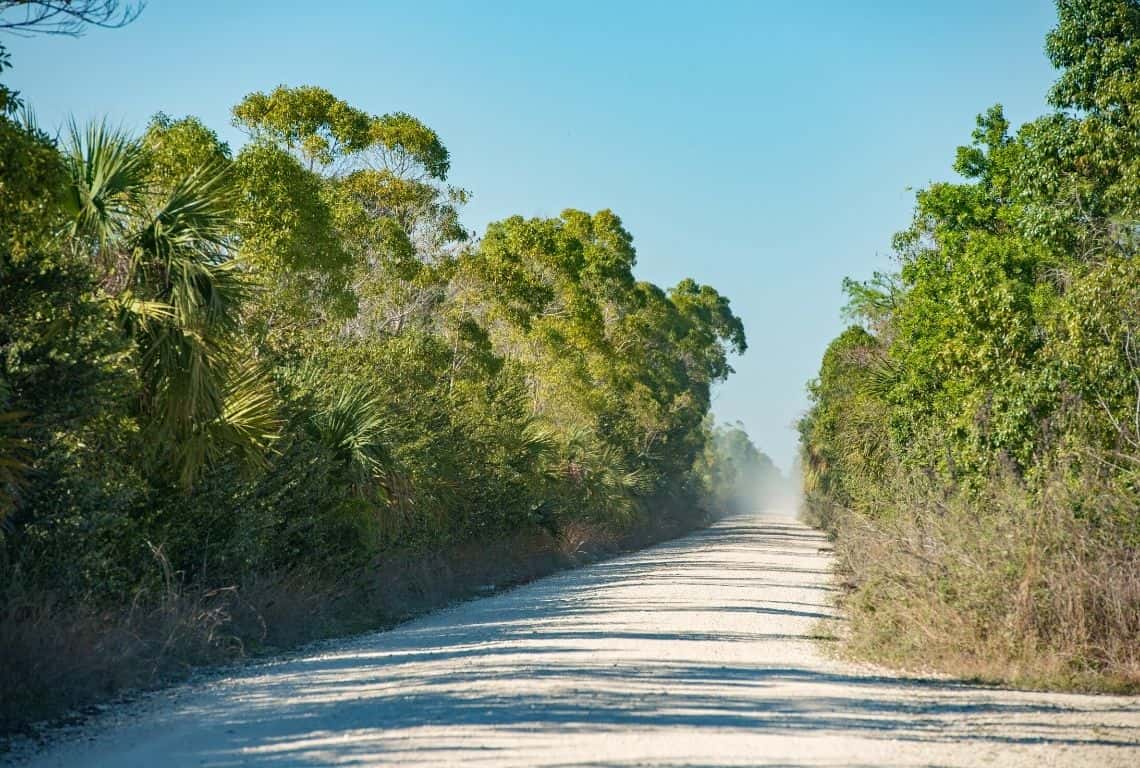
The eastern seven miles of the Loop Road Scenic Drive are paved and after that, it is gravel and dirt / Things to Do in Big Cypress National Preserve
Also, make a note that if you are visiting during the wet season (May through November), parts of the road may be underwater and not passable at all. So, needless to say, the best time to go on any of the scenic drives in Big Cypress National Preserve is during the dry season (November through April).
All year long, the place is abundant with wildlife. Hands down, you will see lots of alligators, and all kinds of birds.
I need to say, that Loop Road Scenic Drive should be taken at a leisurely pace. Honestly, once you are on the gravel section of the road, your speed will be under 20 miles per hour at the most!
So take your time here and appreciate the diverse habitats and pay attention to the beauty around you.
First, you will be passing by a few houses scattered along the road. These are home to several members of the Miccosukee Tribe of Indians of Florida.
Next, you will go by Mitchell Landing Campground.
The first stop is the ghost town of Pinecrest.
The Ghost Town of Pinecrest
At about 6 miles from 40-Mile Bend, you will reach the ghost town of Pinecrest. The town of Pinecrest started as the center of operations during road construction in the 1920s. At its peak in the 1930s, it had a population of about. 400.
Pinecrest attracted lawless elements, as well as a population involved in pursuits related to the Everglades, such as alligator hunting, fishing, and frogging.
Some say, the infamous gangster Al Capone had a mansion, hotel, and brothel in Pinecrest. Also, there was the famous Gator Hook saloon, which operated till 1977.
Pinecrest is also known for the fiddle player Ervin Rouse. Rouse was famous for writing the musical hit “The Orange Blossom Special.” He retired to Pinecrest and occasionally played his fiddle at the Gator Hook saloon.
My recommendation is to just make a quick stop here and snap a few photos of this evocative place. There are rusting antique gas pumps and an old ’54 Dodge.
Once you are ready, jump back into your vehicle and head to the next stop, which is Tree Snail Hammock Trail. It is a perfect place to take a short hike and stretch your legs.
On the way to Tree Snail Hammock Trail, you will be passing by some areas dominated by slash pines.
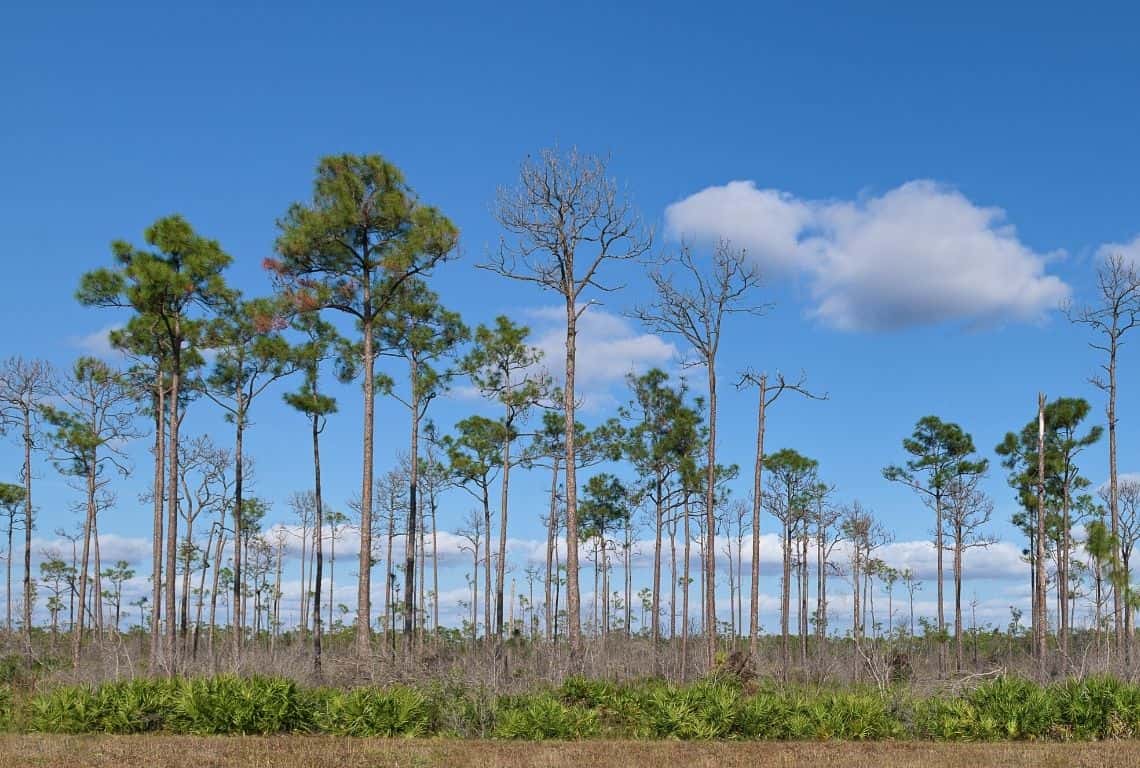
On the way to Tree Snail Hammock Trail, you will be passing by some areas dominated by slash pines / Things to Do in Big Cypress National Preserve
If you are into birdwatching, then what you need to know is that these slash pine forests are home to one of our most endangered birds: the red-cockaded woodpecker.
These birds are unique in that they only nest in living pine trees and use the sap around the nest’s entrance to protect it from predators. If you manage to spot one of these special birds, consider it your lucky day!
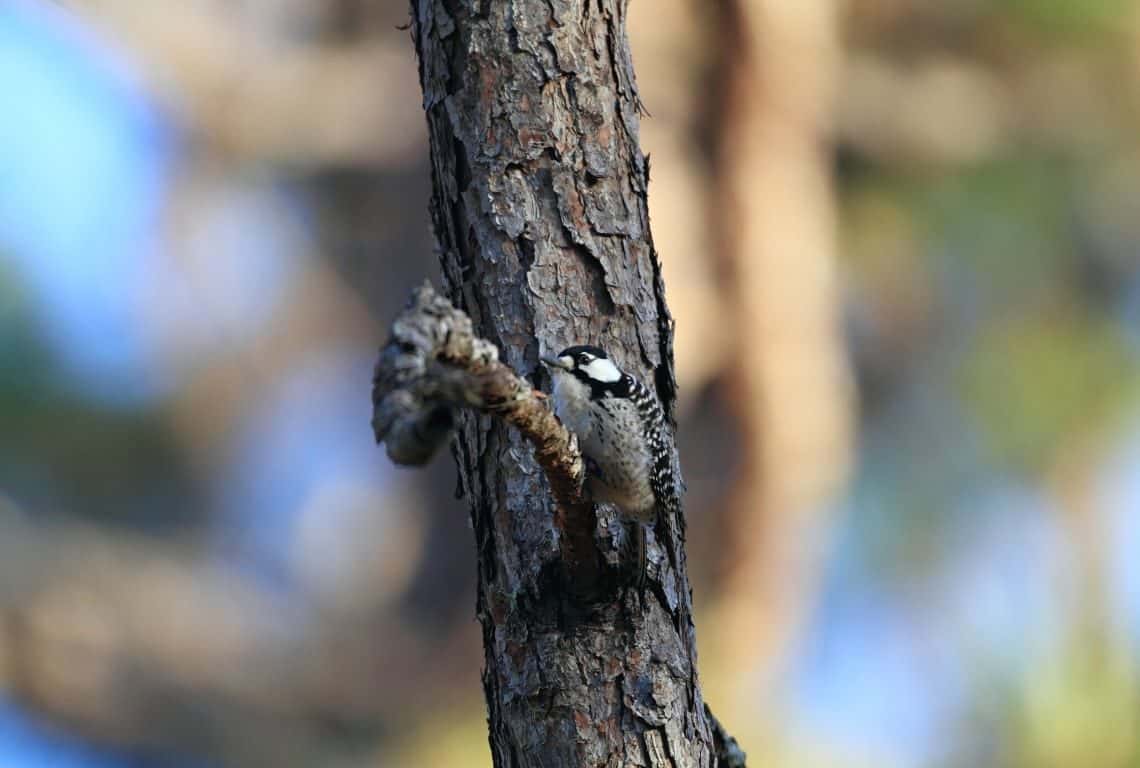
The red-cockaded woodpeckers are unique in that they only nest in living pine trees and use the sap around the nest’s entrance to protect it from predators / Things to Do in Big Cypress National Preserve
Tree Snail Hammock Trail
At about 7.5 miles from the start of the Loop Road Scenic Drive, you will get to Tree Snail Hammock Trail.
It is easy to miss the trailhead of the Tree Snail Hammock Trail, so be on the lookout for the Education Center located on the left hand side of the road. The Education Center is operated by Everglades National Park for educational groups with reservations. The trailhead will be on the right hand side of the road, across from the Education Center.
The trail is a short and easy (about 0.3 miles roundtrip) loop and it is a perfect spot to get out and stretch your legs. There are benches along the way if you need to take a break.
The trail is named for the rare, colorful, and endangered tree snails. The Florida tree snail can reach a length of two to three inches (5.1 – 7.6 centimeters). This species is multi-colored, with colors ranging from white to almost black. The shell is wrapped in spirals of emerald green, chestnut, orange, yellow, or pink. Altogether, there have been more than 50 color varieties named.
It is believed that only 19 of 41 documented species of the snail still exist. All surviving species are federally listed as endangered.
It is kind of like a treasure hunt looking for these tiny creatures and admiring how different shell patterns they all have.
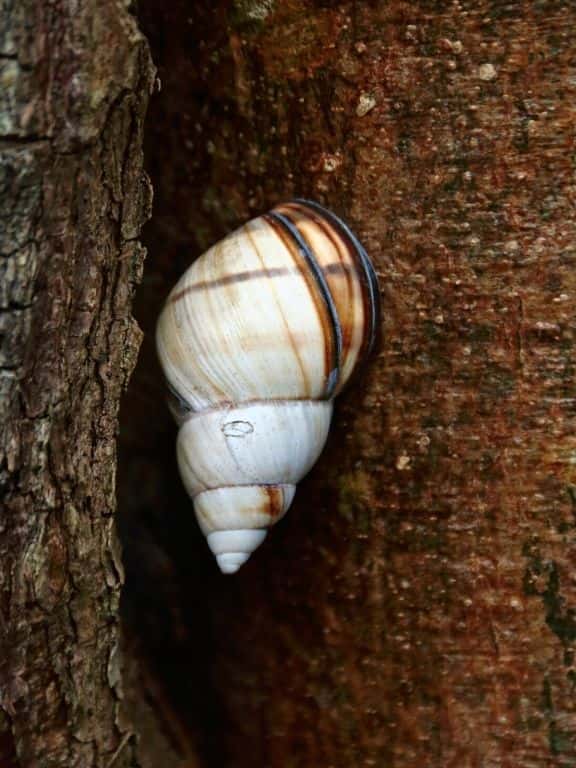
The trail is named for the rare, colorful, and endangered tree snails / Things to Do in Big Cypress National Preserve
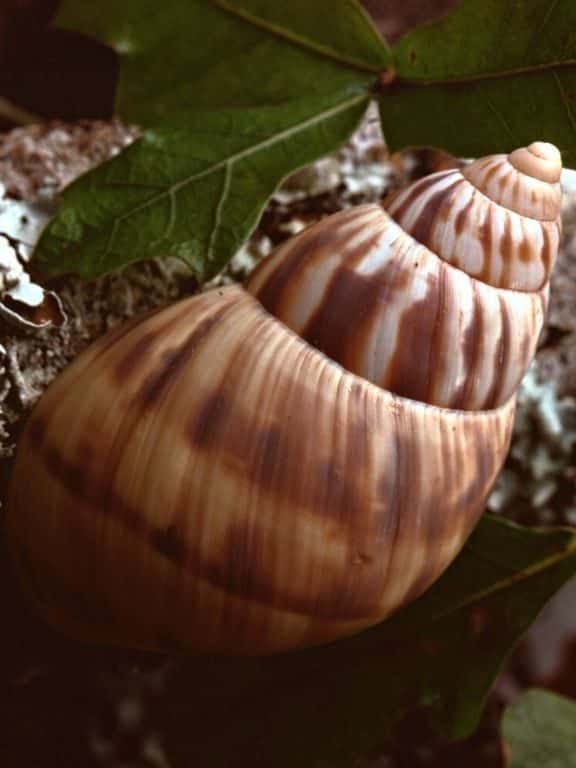
It is believed that only 19 of 41 documented species of the snail still exist. All surviving species are federally listed as endangered / Things to Do in Big Cypress National Preserve
The trail goes through a hardwood hammock, which is a higher and drier habitat. You will be able to spot some gumbo limbo trees also called the Tourist Tree for their peeling red bark, like the skin of a sunburnt tourist.
Did you know that gumbo limbo trees are very useful? Their wood is suitable for light construction and firewood, and the resin is used as glue, varnish, and incense. Anti-inflammatory properties in its leaves, bark, and resin can be used to treat a variety of aches and pains. The resin is used as a treatment for gout.
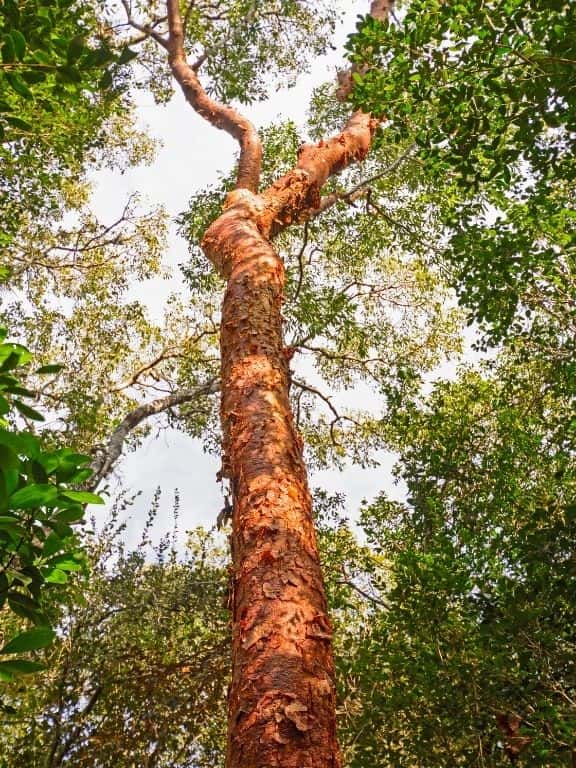
You will be able to spot some gumbo limbo trees also called the Tourist Tree for their peeling red bark, like the skin of a sunburnt tourist / Things to Do in Big Cypress National Preserve
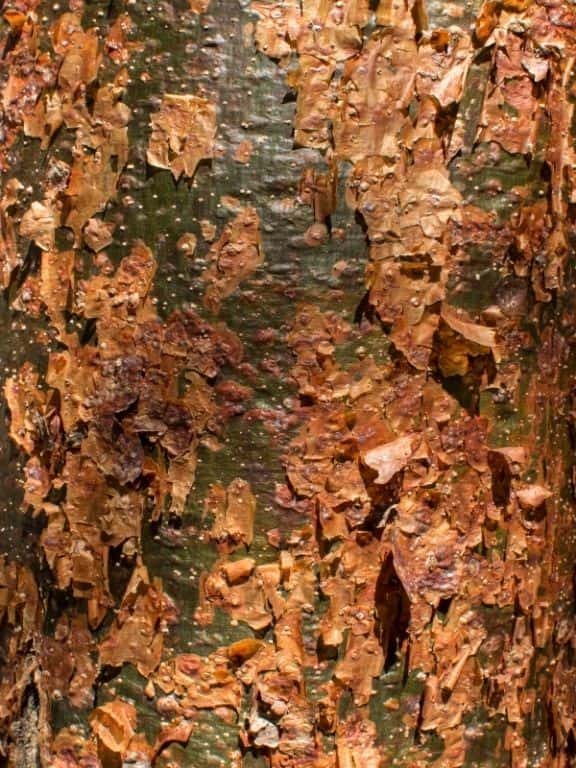
Anti-inflammatory properties in gumbo limbo leaves, bark, and resin can be used to treat a variety of aches and pains. The resin is used as a treatment for gout / Things to Do in Big Cypress National Preserve
Once you are done with the hike, let’s continue on Loop Road Scenic Drive. Next, you will be passing by an area that has many small culverts. They protect the road from washing out and allow a more natural flow of water southwards.
If you are visiting during the dry season (November through May) be on the lookout for any remaining bodies of water, as they are excellent spots for spotting wildlife.
The Florida Trail Southernmost Point
At about 13.6 miles from the start of Loop Road Scenic Drive, you will reach the Florida Trail Southernmost Point.
All in all, the trail Florida Trail is a 1,400-mile trail that runs through the entire state of Florida, and here, you reached its southernmost point!
My recommendation is to get out of your vehicle and stretch your legs a bit and hike the trail for a bit. If you are visiting during the dry season (November through May), then the trail path should be dry and easy to hike. If you are visiting during the wet season, then the trail might not be passable since the path will be ankle- or knee-deep underwater.
Needless to say, even if you hike for a bit, you will see how beautiful this trail is. It will take you through the stunning cypress forest decorated with air plants.
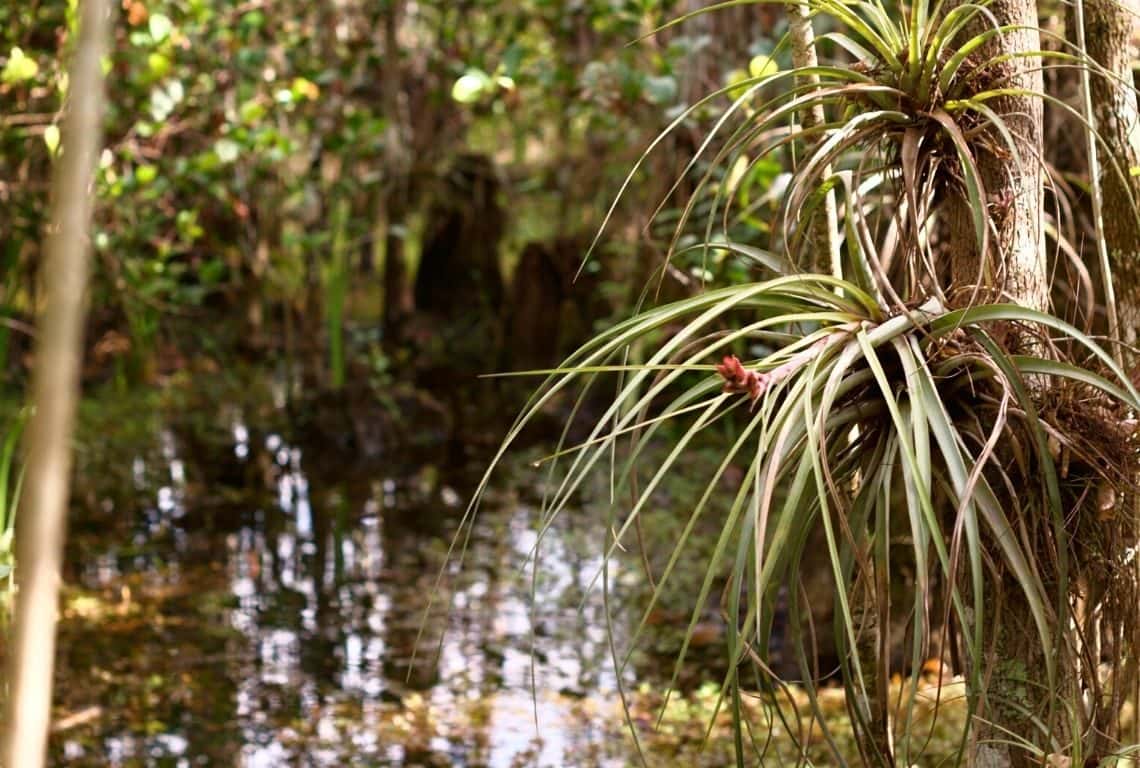
Even if you hike a little on Florida Trail Southernmost Point, you will see how beautiful this trail is. It will take you through the stunning cypress forest decorated with air plants / Things to Do in Big Cypress National Preserve
Air plants are a variety of Epiphytes, meaning they need no soil to develop. They actually do call for a platform to commence growing.
These plants are not parasitic and use their host as a method of support. The plant receives its nutrition from the moisture and dirt fibers drifting in the air. The roots are mainly implemented as a means of attaching themselves to the supporting subject.
Source: Air Plant Supply Co.
Culvert 30
Culvert 30 is located about 14.2 miles from the start of Loop Road Scenic Drive. It is deeper than the previous culverts that you passed on your way and it stays flooded even during the dry season. It is a great spot for wildlife viewing.
Hands down, you will see alligators, all kinds of birds, and fish, and hopefully, if you are lucky, maybe you can spot the elusive river otter.
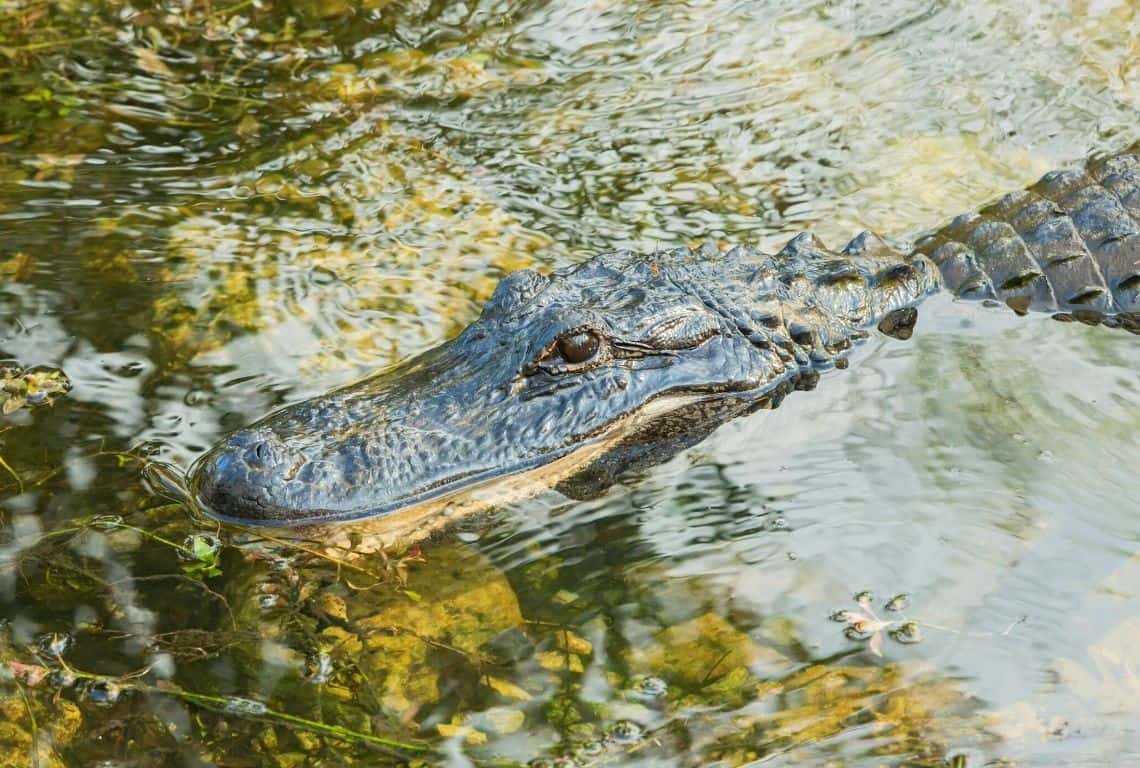
Alligators Can Have 3,000 Teeth in Their lives. Source: Newsweek / Things to Do in Big Cypress National Preserve
- Alligators have between 74 and 80 teeth in their mouth at a time which are replaced once worn down. This means an alligator can go through 3,000 teeth in a lifetime, according to Smithsonian’s National Zoo and Conservation Biology Institute.
- Alligators are also considered to be the loudest reptiles and can hit a 90-decibel bellow. In comparison, humans max out at about 70-decibel.
- Leading experts have found that alligators’ blood has antibiotic and antiviral properties. Particularly, scientists in Louisiana found that blood from the American alligator can successfully destroy 23 strains of bacteria, including some known to be resistant to antibiotics. According to National Geographic, their blood can also deplete and destroy a significant amount of HIV, the virus that causes AIDS.
- The sex of alligators is determined by the ambient temperature of the developing eggs. In science, this process is called temperature-dependent sex determination (TSD). For example, in the American alligator’s eggs, incubation at 33C produces mostly males, while incubation at 30C produces mostly females.
- Alligator mothers are devoted parents, from the moment they build nests for their eggs to when their babies are born. When they are ready to come out of their eggs, baby alligators make high-pitched noises and their moms carry the eggs to water in their jaws so they can hatch. Once the babies are born, mothers protect and care for them for up to three years.
Source: Newsweek
Sweetwater Strand
Sweetwater Strand is no doubt the most spectacular spot on Loop Road Scenic Drive. If you are into photography, then this is the photographer’s paradise!
Sweetwater Strand is located about 19 miles from the start of Loop Road. The cypress trees here have grown quite large, aided by the rich nutrients that collect in the deep strand. They are all covered by epiphytes – bromeliads, Spanish moss, and ferns.
As an adaptation for stability, and to help withstand hurricane-force winds, cypress knees project upward from the roots. These knees serve to lock together the roots of various trees and form a huge net that is much more resistant to uprooting than alone shallow-rooted cypress.
This is a great place to see alligators and all kinds of birds like herons, egrets, and ibis.
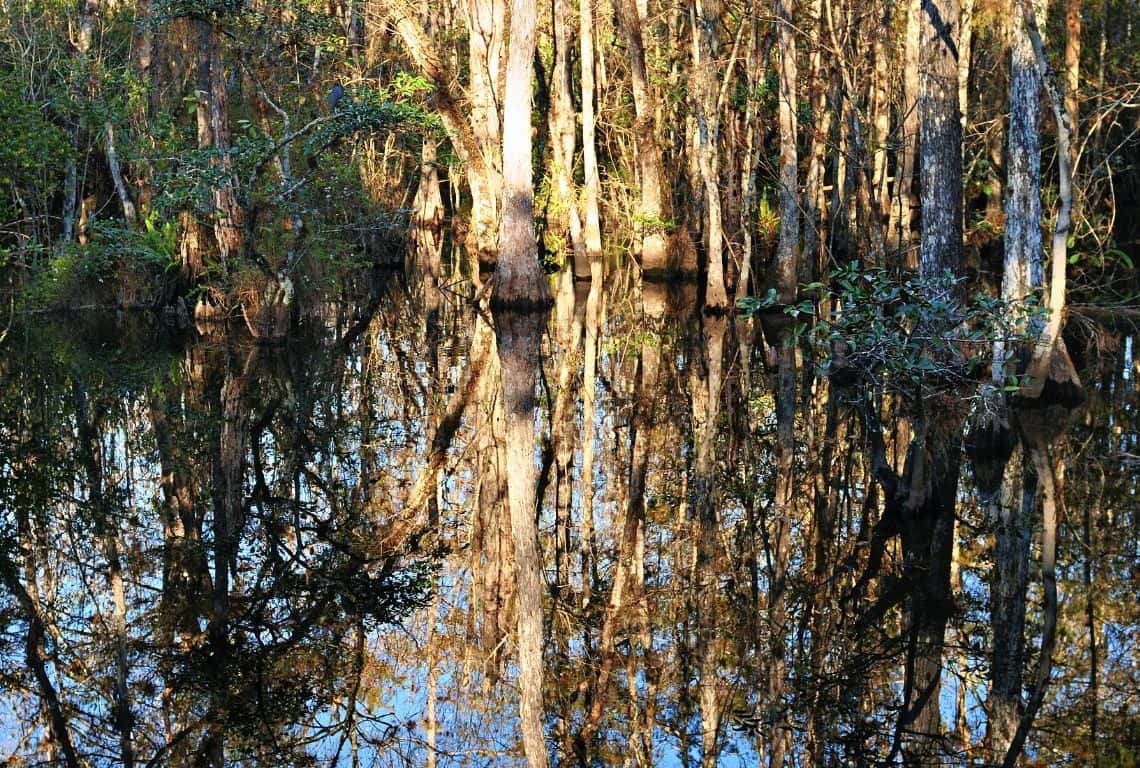
As an adaptation for stability, and to help withstand hurricane-force winds, cypress knees project upward from the roots. These knees serve to lock together the roots of various trees and form a huge net that is much more resistant to uprooting than alone shallow-rooted cypress.
Scenic Drives in Big Cypress
Gator Hook Trail
The next stop is Gator Hook Trail.
The trailhead is located about 22 miles from the start of Loop Road. There are a few picnic tables as well as pit toilets.
The trail is a 5-mile hike that follows a historic tram road, which was originally built by loggers for small trains whose purpose was to transport cypress trees out of the swamp. Today, so many years later, you can still see a couple of the original cypress rails along the trail as the wood is very resistant to decay.
Logging was big business in this region up to the 1950s. In fact, the logging industry was so widespread most of the marketable wood was harvested. What you see today is the second growth, only a few of the original giants remain.
Sawgrass Prairie
At about 22.5 miles from where you started, you will reach the sawgrass prairie with a cypress stand visible in the distance. The sawgrass is a dominant prairie species, but ironically it is not grass, it is a sedge. The main difference between the two is that sawgrass which is a sedge has triangular stems, whereas true grasses have round stems.
Sawgrass is a tall, slender plant that can reach up to ten feet high. It grows quickly and densely. Sawgrass is famous for its sharp points that run along the edges of its leaves. These teeth can cut you upon contact – hence the name sawgrass.
Although sawgrass in the Everglades can harm the human hand, it is essential to life in the Everglades in many ways. Not only is it efficient at utilizing nutrients to sustain the health of its surrounding environment, but as it decays, it creates a healthy, organic soil called peat. It provides energy to migrating birds with its nutritious seeds and provides safe shelter for animals like alligators.
In the distance, you will see the cypress stand. The cypress stands found in prairie habitats are considered dwarf. These trees are stunted due to a lack of nutrients. Though they look like young trees, many of them are hundreds of years old.
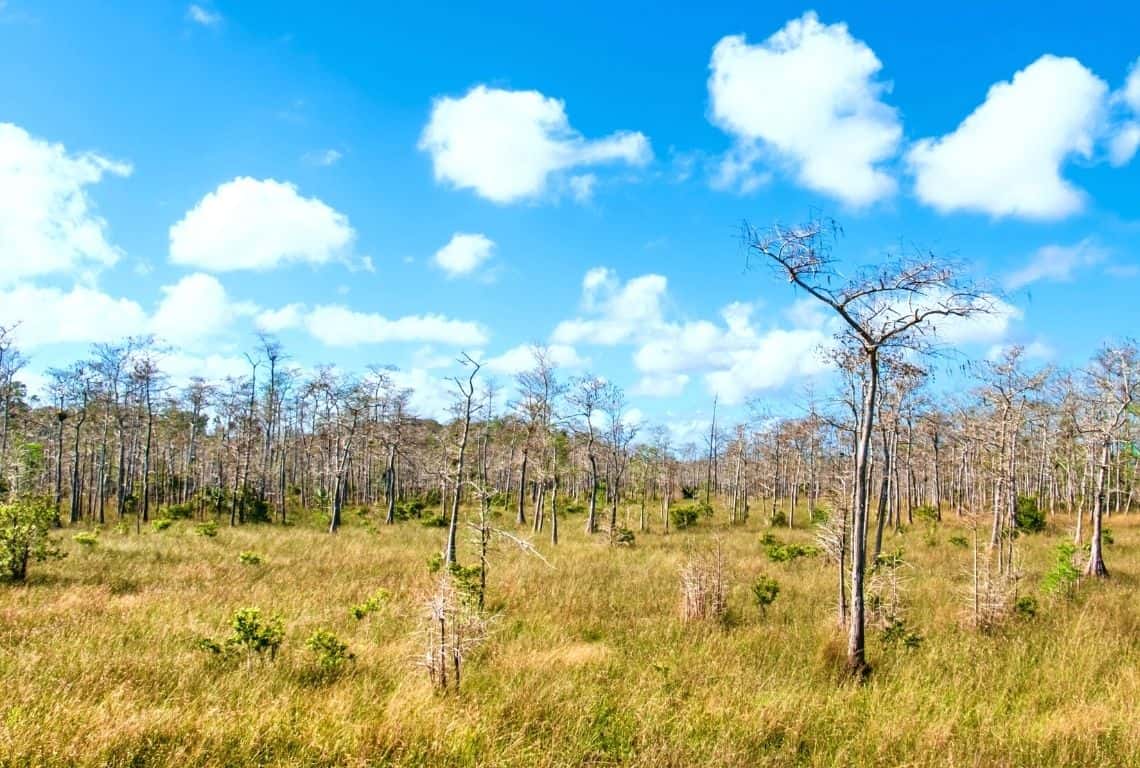
Although sawgrass in the Everglades can harm the human hand, it is essential to life in the Everglades in many ways. Not only is it efficient at utilizing nutrients to sustain the health of its surrounding environment, but as it decays, it creates a healthy, organic soil called peat /T hings to Do in Big Cypress National Preserve
These areas are perfect habitats for snakes. The ones most often sighted include the black racer, the yellow rat snake, and various water snakes. These are all nonvenomous and serve important ecological roles in the swamp.
Monroe Station
Monroe Station marks the end of Loop Road Scenic Drive.
It is one of the original buildings along the Tamiami Trail. Completed in 1928, or 1929, as one of six service stations built at regular intervals along the road to assist travelers – providing gasoline, refreshments, and assistance for broken down vehicles. In later years, it was also a tavern and roadside inn.
The historic building has stood through many eras and is now closed due to structural problems.
Turner River, Upper Wagonwheel and Birdon Road Loop Drive
Turner River, Upper Wagonwheel, and Birdon Road Loop Drive is the next scenic drive in Big Cypress National Preserve.
Now, when you finish Loop Road Scenic Drive, you will find yourself at the Tamiami Trail (U.S. Highway 1).
Turn left (west) and continue on Tamiami Trail (U.S. Highway 41) for about 10.4 miles until you reach Turner Road.
At Turner Road turn right and continue north. This is the start of the second scenic drive in Big Cypress National Preserve.
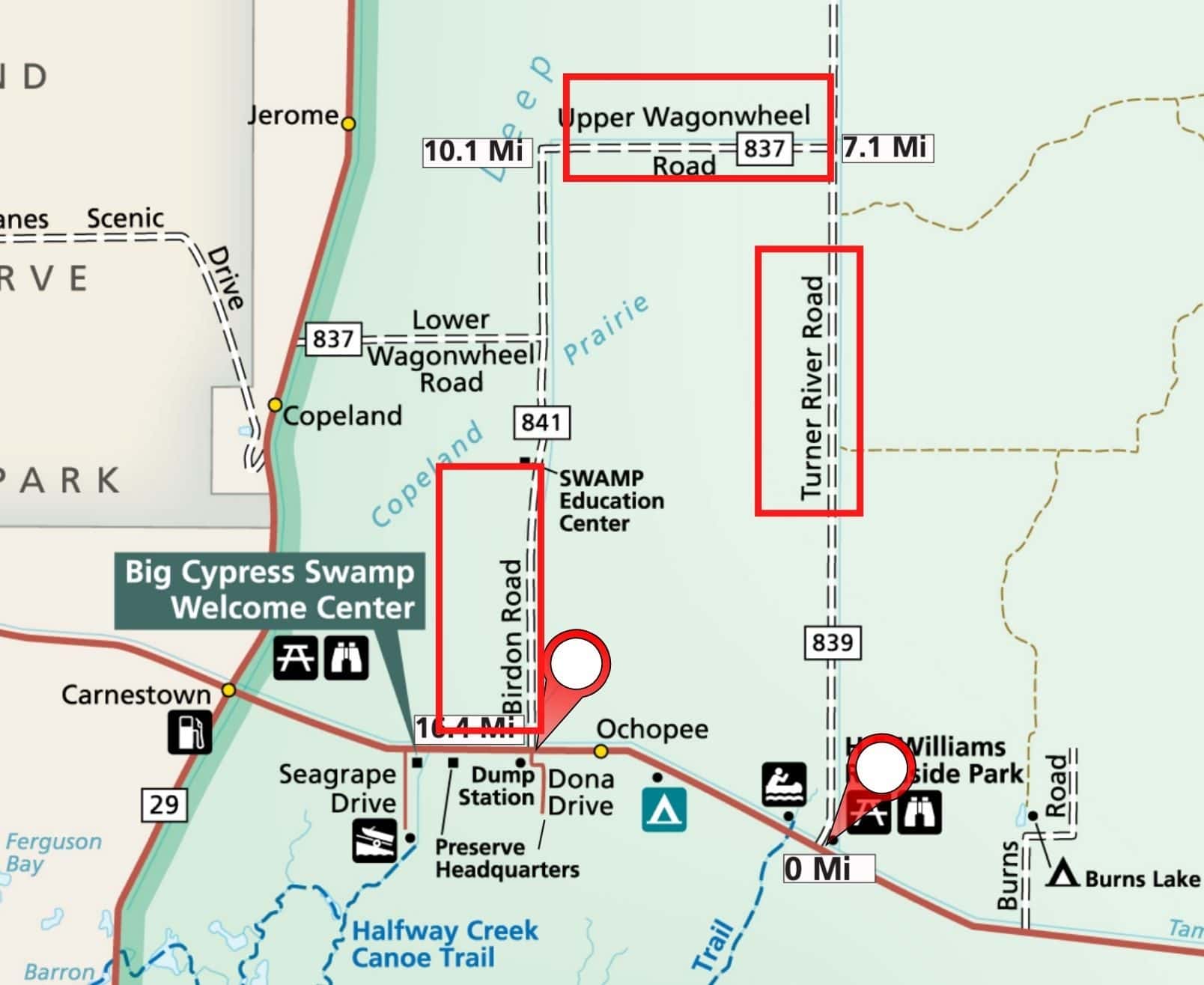
Map of Turner River, Upper Wagonwheel, and Birdon Road Loop Drive in Big Cypress National Preserve. Image Source: NPS /Things to Do in Big Cypress National Preserve
H.P. Williams Roadside Park
H.P. Williams Roadside Park marks the entrance to Turner River Road.
Homer P. Williams was an engineer for the Collier Company during the construction of the Tamiami Trail which was completed in 1928.
There is a nice boardwalk that ends with a viewing platform. So make sure to get out and stretch your legs.

There is a nice boardwalk that ends with a viewing platform. So make sure to get out and stretch your legs / Things to Do in Big Cypress National Preserve
If you are visiting during the dry season, then this is a perfect spot for viewing wildlife. You are guaranteed to see alligators, fish, turtles, and birds abound along this boardwalk.
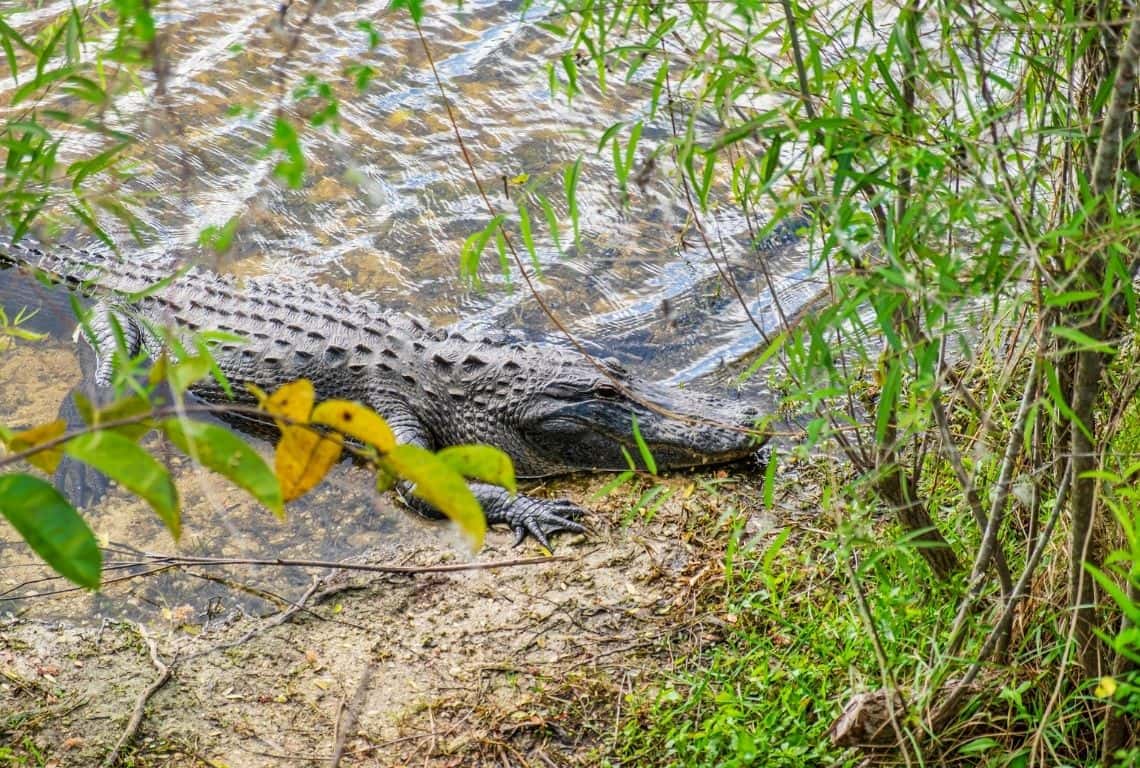
If you are visiting during the dry season, then this is a perfect spot for viewing wildlife / Things to Do in Big Cypress National Preserve
Turner River Road
The first section of the loop is called the Turner River Road. It is 7.1 miles long. The road acts as a dam through the swamp. It cuts off the Turner River, located to the west, from its water source.
Now, along the road, you will see the descendants of the many harvested cypress trees. At the height of logging in the late 1950s, one million board feet per week was removed from the swamp and used for docks, boat stands, and other purposes. The rot-resistant nature of cypress made it a prime commodity. Today, what you can see is the second generation of these giant trees, which are much smaller.
My recommendation is to make as many stops as possible along Turner River Road and be on the lookout for wildlife.
The Anhinga is usually easily spotted along the road. You will be able to see these birds either perched on the branches of the trees drying their wings or swimming with only their head and neck visible.
The Anhinga does not have oil glands for waterproofing its feathers like most water birds, which gives it an advantage of diving deeper, however, once out of the water, it needs to dry itself thoroughly.
The Anhinga has a sharp pointed beak and it spears the fish with it. Sometimes it has to swim to shore and pry the fish off its beak by rubbing on a rock or tree limb.
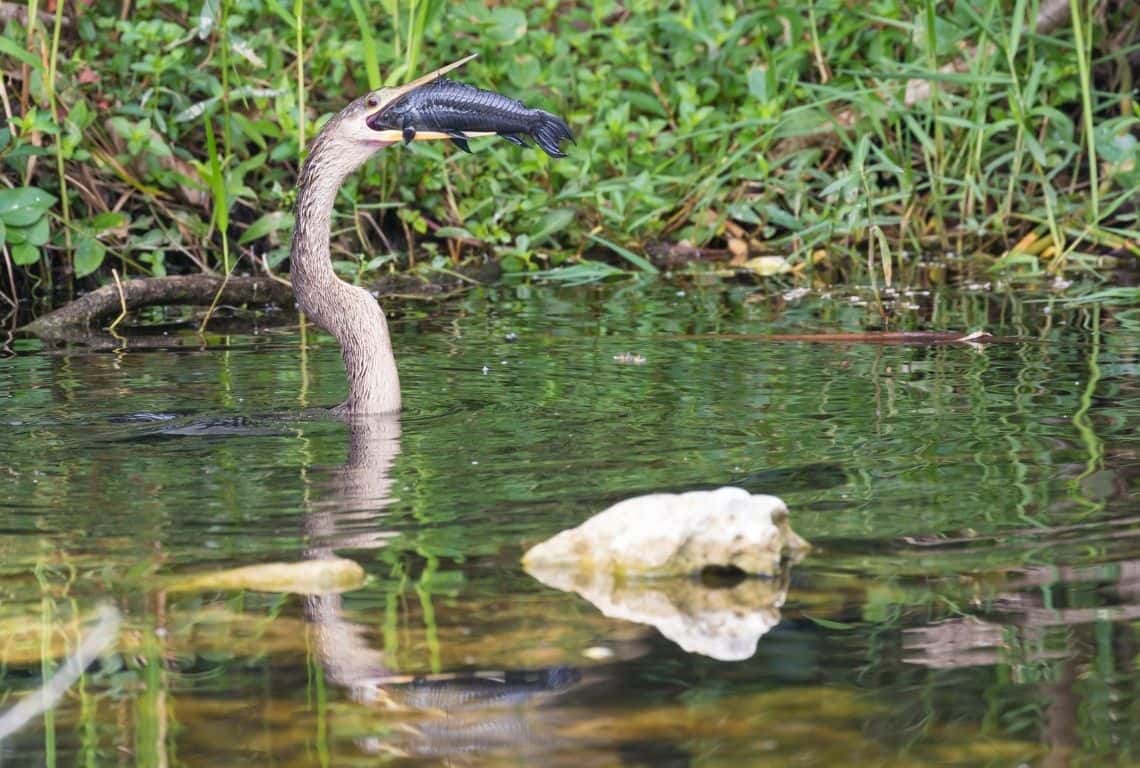
The Anhinga has a sharp pointed beak and it spears the fish with it. Sometimes it has to swim to shore and pry the fish off its beak by rubbing on a rock or tree limb / Things to Do in Big Cypress National Preserve
Also, be on the lookout for the great blue heron. It has a grayish-blue body with a distinctive black stripe over its eye. It stands 52” tall and uses this height to peer into the water to find fish, reptiles, and amphibians.
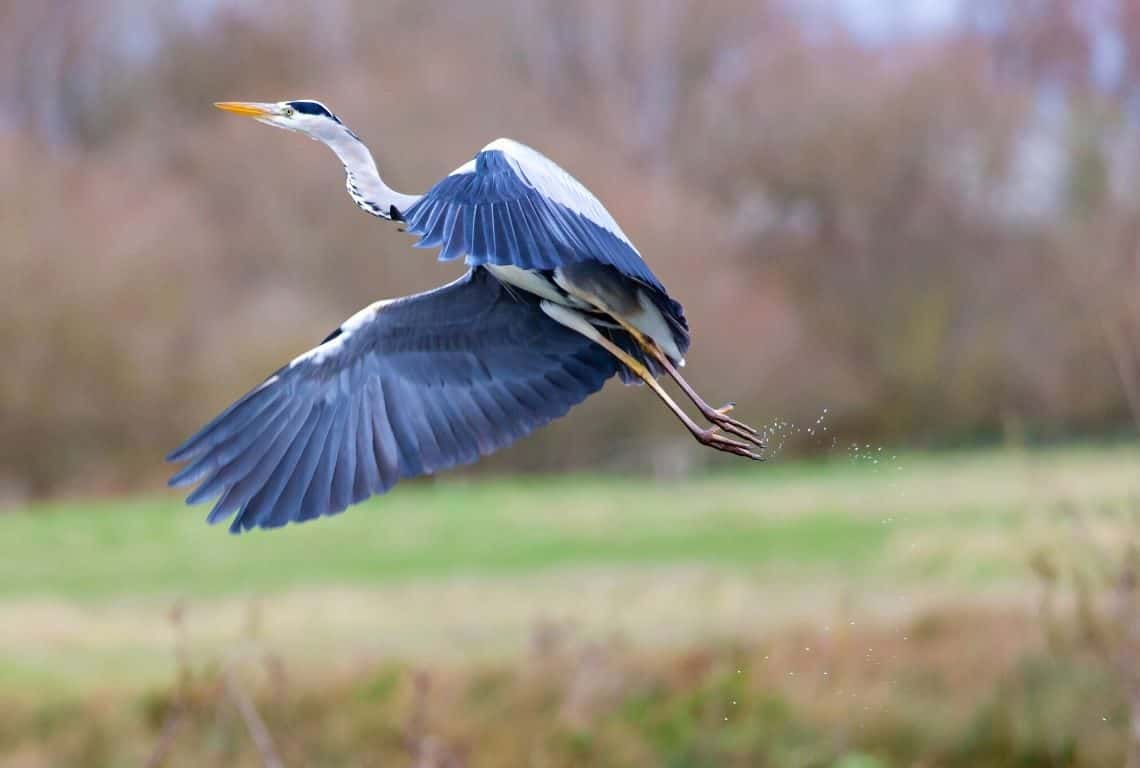
The great blue heron has a grayish-blue body with a distinctive black stripe over its eye / Things to Do in Big Cypress National Preserve
Another one to look for is the great egret. It stands at 40” and has a white body, yellow beak, and dark legs. The great egrets hunt in classic heron fashion, standing immobile or wading through wetlands to capture fish with a deadly jab of their yellow bill.
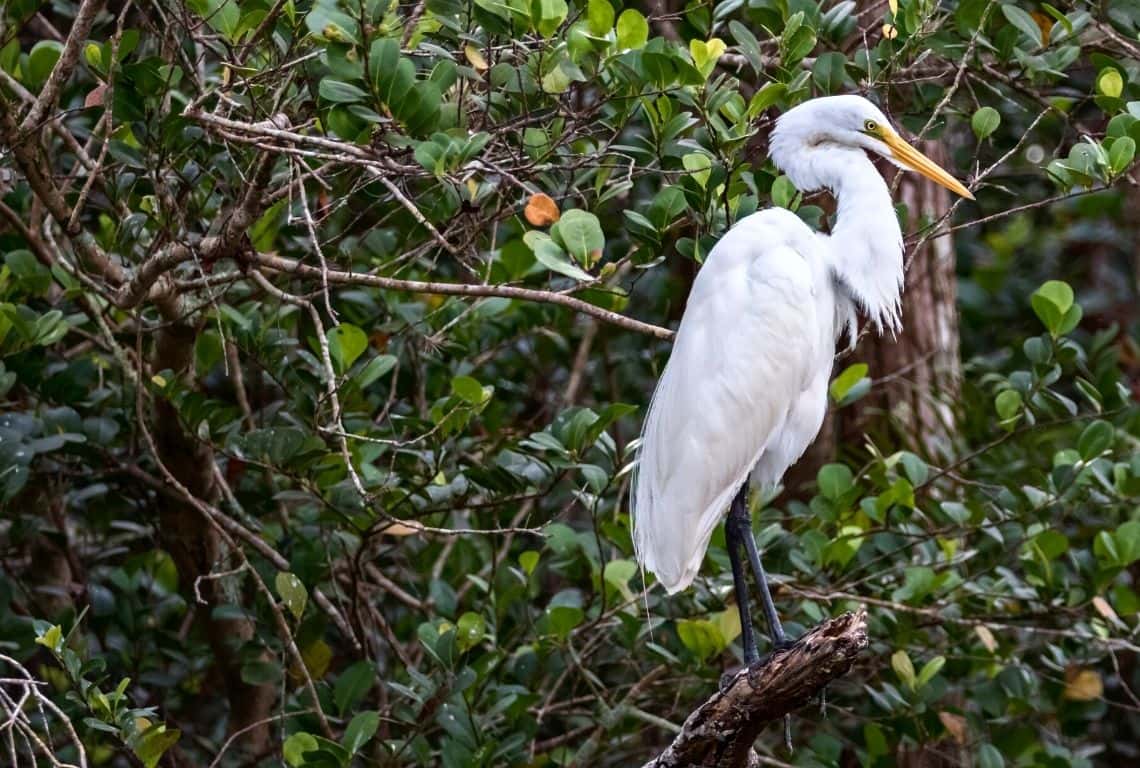
The great egrets hunt in classic heron fashion, standing immobile or wading through wetlands to capture fish with a deadly jab of their yellow bill / Things to Do in Big Cypress National Preserve
The American alligator is the most famous resident and adept predator along Turner River Road. They bask on the canal rims using a combination of sun and water to control their body temperature.
Fish, small mammals, birds, reptiles, and even other alligators are food for this remarkable predator. During the dry season, eating occurs on average, once a week.

Alligators usually bask on the canal rims using a combination of sun and water to control their body temperature / Things to Do in Big Cypress National Preserve
Upper Wagonwheel Road
At about 7.1 miles from the start of the loop, turn left (west) and continue on Upper Wagonwheel Road.
The area around the road is dominated by sawgrass. To the north, you will see clusters of cabbage palms.
The cabbage palm is the state tree of Florida and South Carolina. It is cold hardy to at least 15˚F. Cabbage palm leaves were used by indigenous people to make nets, baskets, and thatch. Seminoles used the trucks for poles, paddles, arrows, and more.
The name “cabbage palm” comes from its edible immature leaves, or “heart,” which has a cabbage-like flavor.
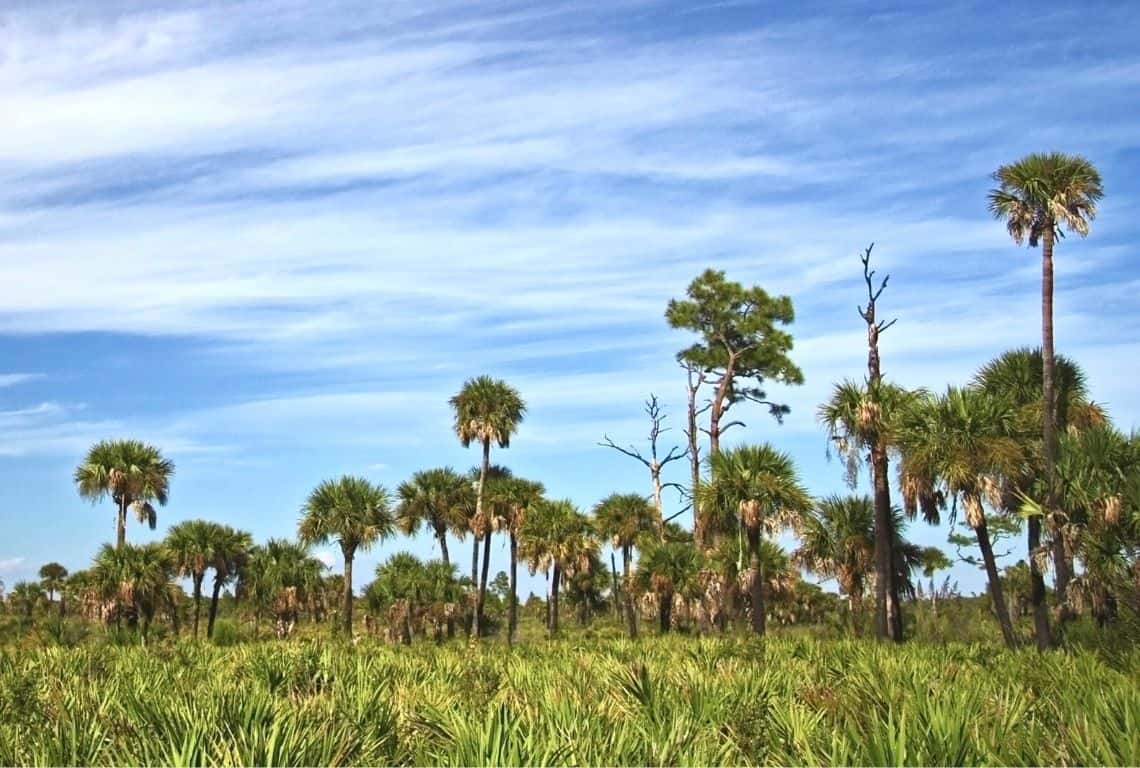
The name “cabbage palm” comes from its edible immature leaves, or “heart,” which has a cabbage-like flavor / Things to Do in Big Cypress National Preserve
If you gaze to the south, you will see slash pines. The name slash is derived from the method of extracting resin from the trees by scoring or slashing to start the flow. This historic process was employed to extract resin for use in the production of turpentine.
Birdon Road
After about 3 miles, Upper Wagonwheel Road ends and gives way to Birdon Road. Turn left and head south. There are plenty of opportunities to make stops along the way and look for wildlife.
At about 14.3 miles from the start of the loop road, you will reach Swamp Education Center. It offers a variety of educational programs and provides an opportunity for sixth-grade students to learn about Big Cypress National Preserve.
Mile 16.4 marks the end of Birdon Road and brings you back to Tamiami Trail (US 41) completing the scenic loop drive.
The Tamiami Trail/U.S. Highway 41
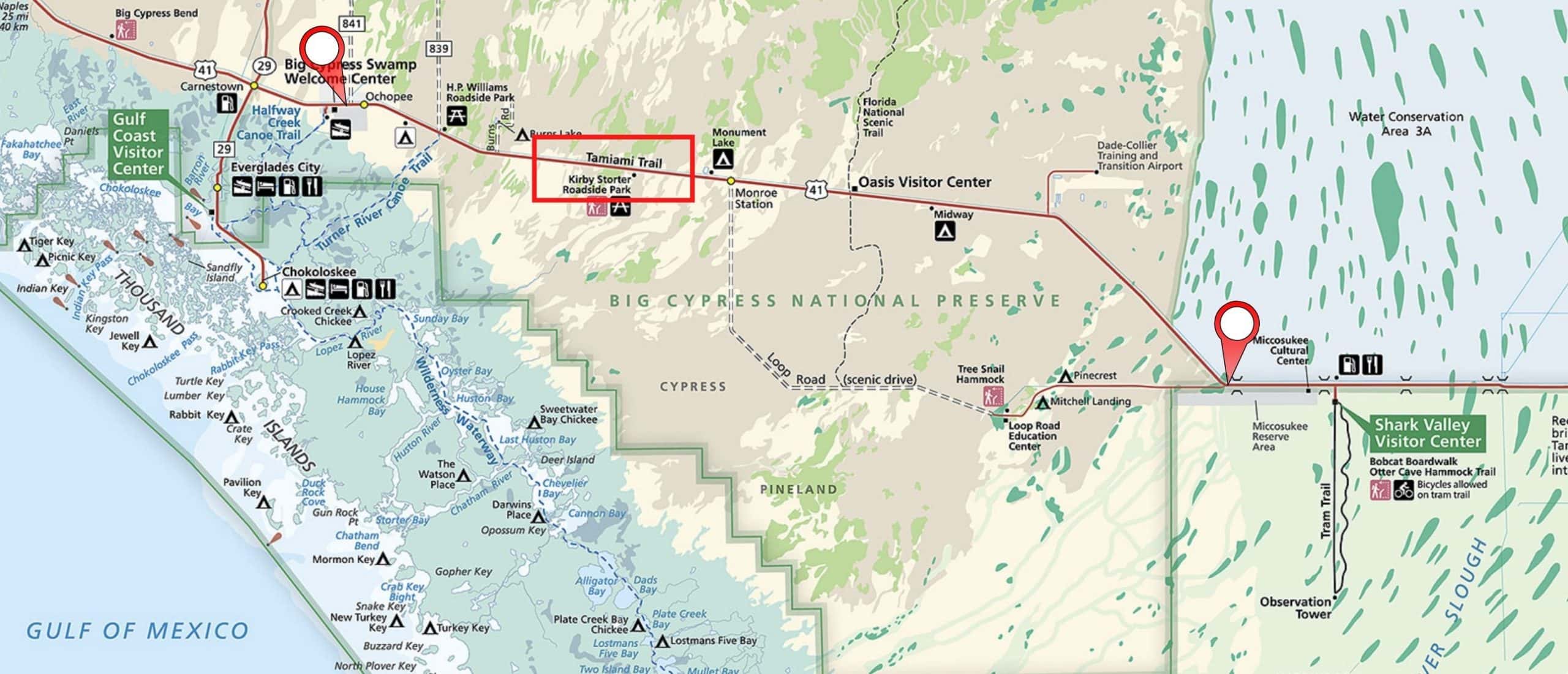
The Tamiami Trail in Big Cypress National Preserve. Image Source: NPS / Things to Do in Big Cypress National Preserve
The Tamiami Trail (U.S. Highway 41) is the third scenic drive in Big Cypress National Preserve.
Once you complete Turner River, Upper Wagonwheel, and Birdon Road Scenic Drive in Big Cypress National Preserve, you will reach the Tamiami Trail (U.S. Highway 41). Turn left (east) and continue on the Tamiami Trail (U.S. Highway 41). You will be going back to Miami.
Ochopee Post Office
The Ochopee Post Office is just a quick stop to snap a couple of pictures. This post office is the smallest post office building in the United States. It is fully functional, serving a three-county area, including the surrounding populations of Miccosukee and Seminole Native Americans.
Make sure to ask the postal clerk for the Ochopee Post office postmark. It is just a fun keepsake to have.
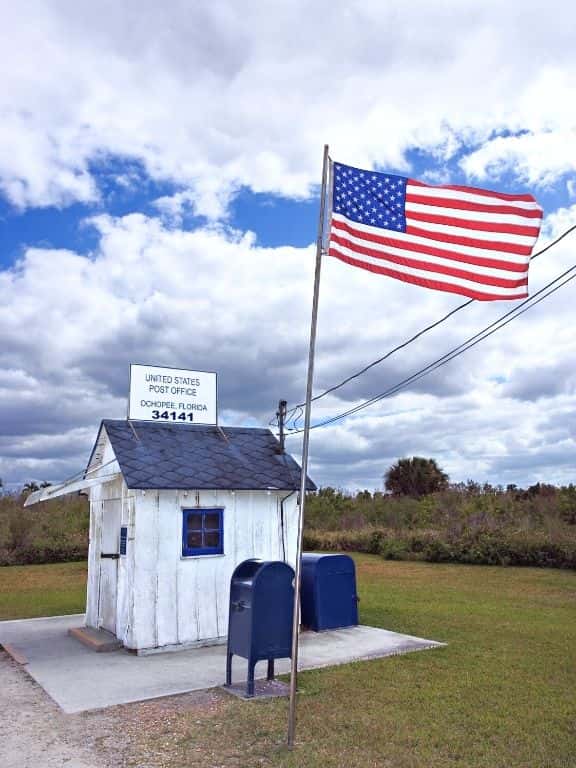
Ochopee Post post is the smallest post office building in the United States / Things to Do in Big Cypress National Preserve
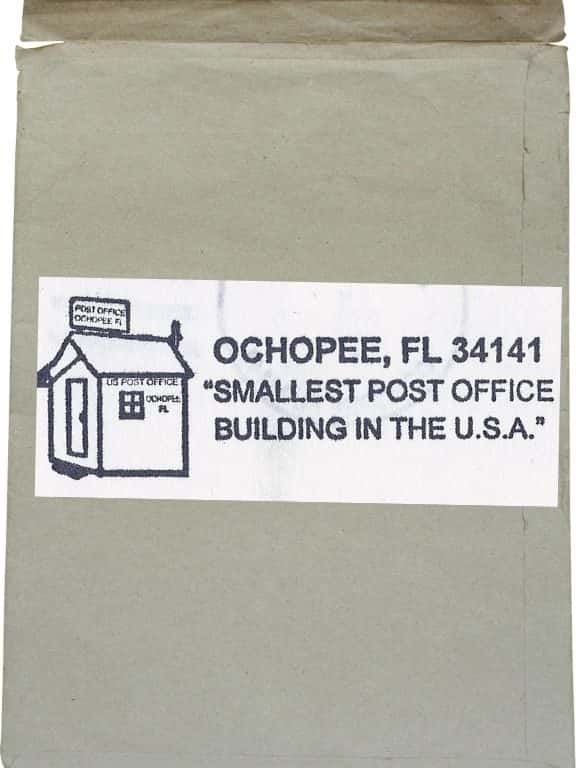
Make sure to ask the postal clerk for the Ochopee Post office postmark. It is just a fun keepsake to have / Things to Do in Big Cypress National Preserve
Kirby Storter Roadside Park and Boardwalk
The next stop is Kirby Storter Roadside Park and Boardwalk. This is a perfect stop to get out of your car and stretch your legs. By the way, there are toilets and picnic tables as well.
The Kirby Storter Boardwalk is a one-mile round-trip interpretive walk into the Big Cypress National Preserve. The trail will take you through a sawgrass prairie habitat into a cypress swamp.
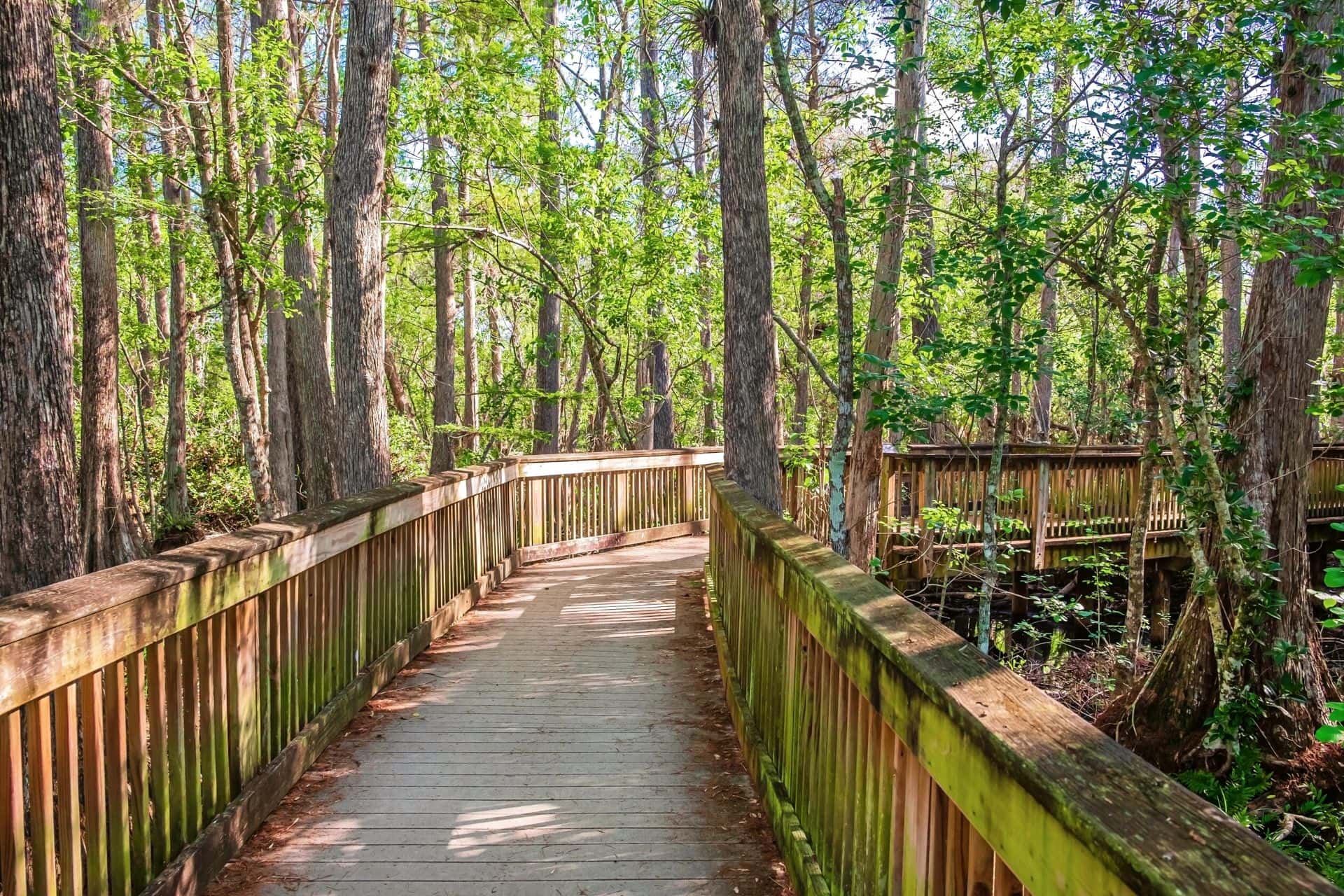
There is a nice boardwalk that ends with a viewing platform. So make sure to get out and stretch your legs / Things to Do in Big Cypress National Preserve
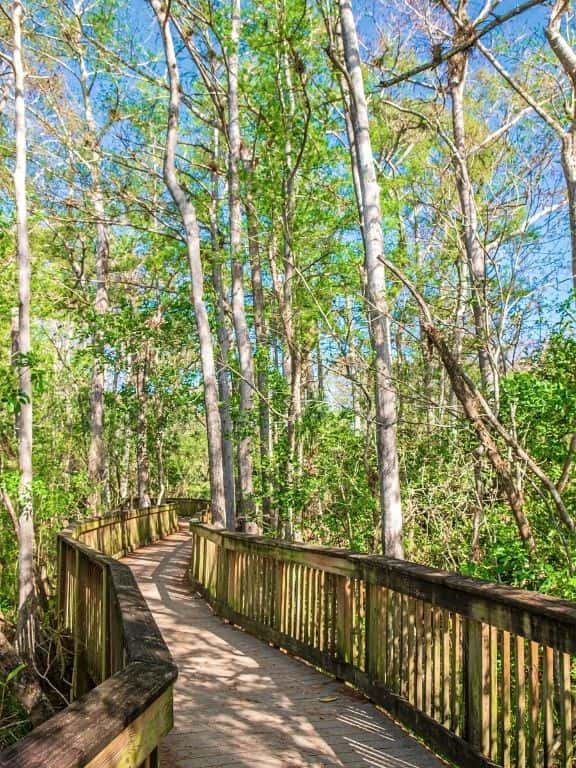
Things to Do in Big Cypress National Preserve
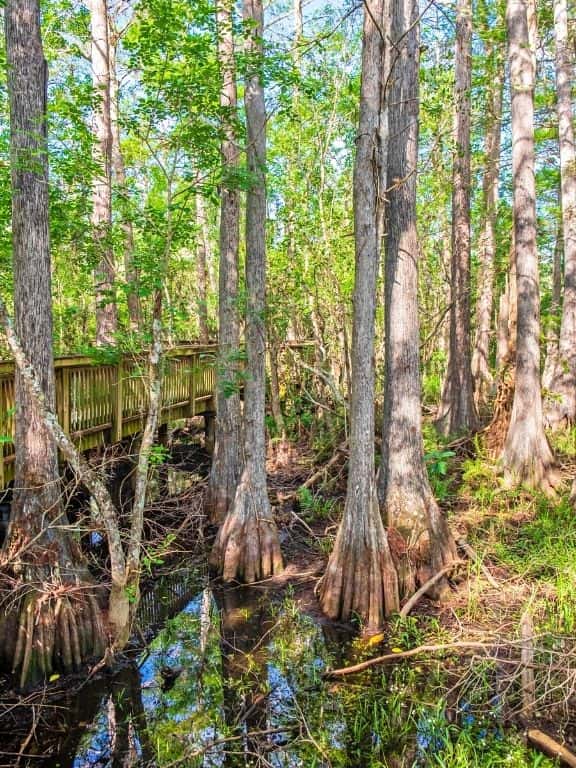
Things to Do in Big Cypress National Preserve
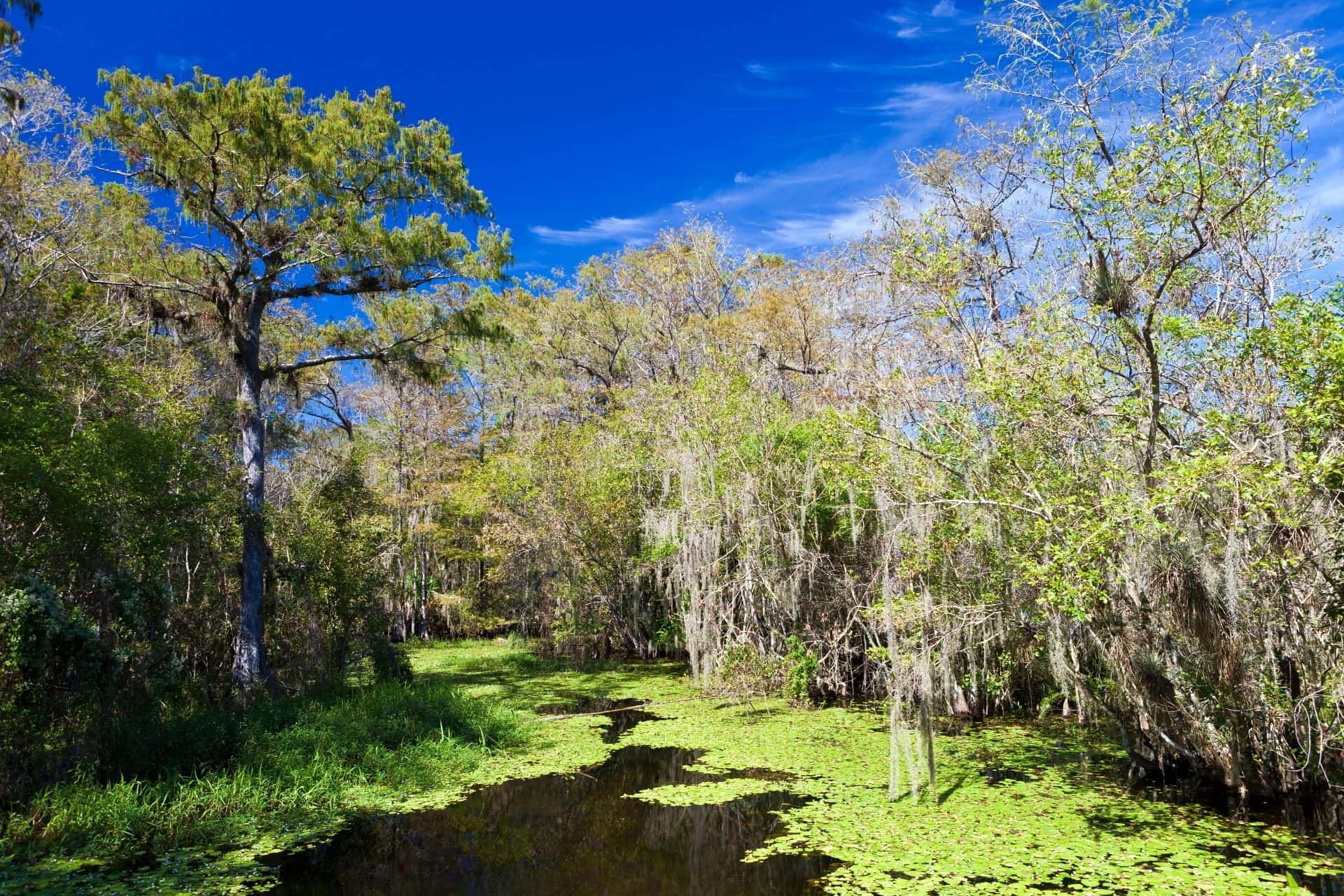
The Kirby Storter Boardwalk is a one-mile round-trip interpretive walk into the Big Cypress National Preserve / Things to Do in Big Cypress National Preserve
This interpretive walk leads you through typical Big Cypress Swamp habitats from open wet prairie through floodplain forest and cypress slough to an open pond along a sluggish river.
The boardwalk ends with a viewing platform overlooking a small pond along a sluggish river. There are a couple of benches you can take a break.
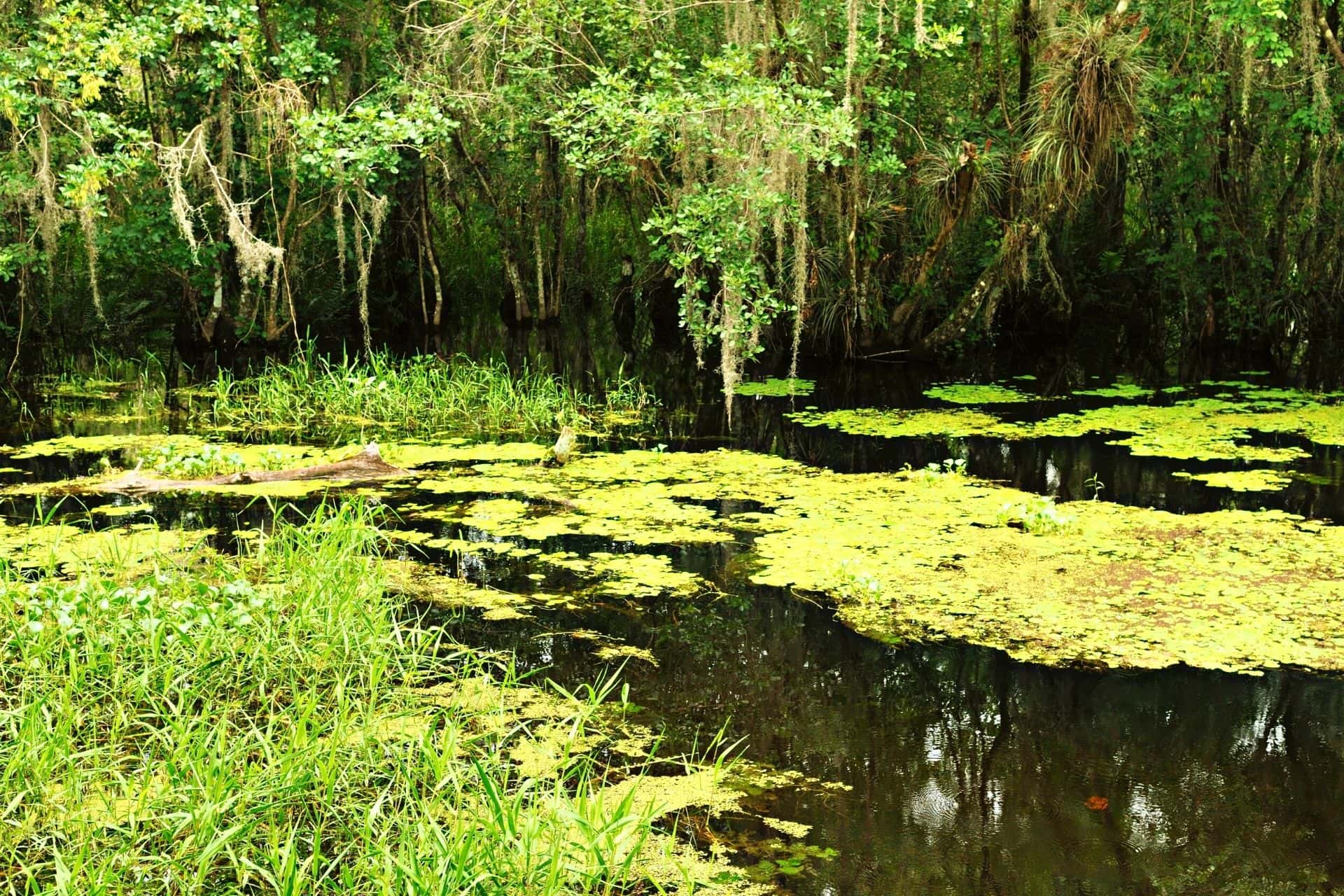
This interpretive walk leads you through typical Big Cypress Swamp habitats from open wet prairie through floodplain forest and cypress slough to an open pond along a sluggish river / Things to Do in Big Cypress National Preserve
Big Cypress Oasis Visitor Center and Boardwalk
Big Cypress Oasis Visitor Center has several good educational displays and it is worth a quick stop. If you have time, then make sure to watch a video that is shown every half hour. It is well done and a nice introduction to the area.
Next to the Visitor Center is a boardwalk, however, it is more like a viewing platform. It is a perfect spot to see lots of alligators and all kinds of birds.
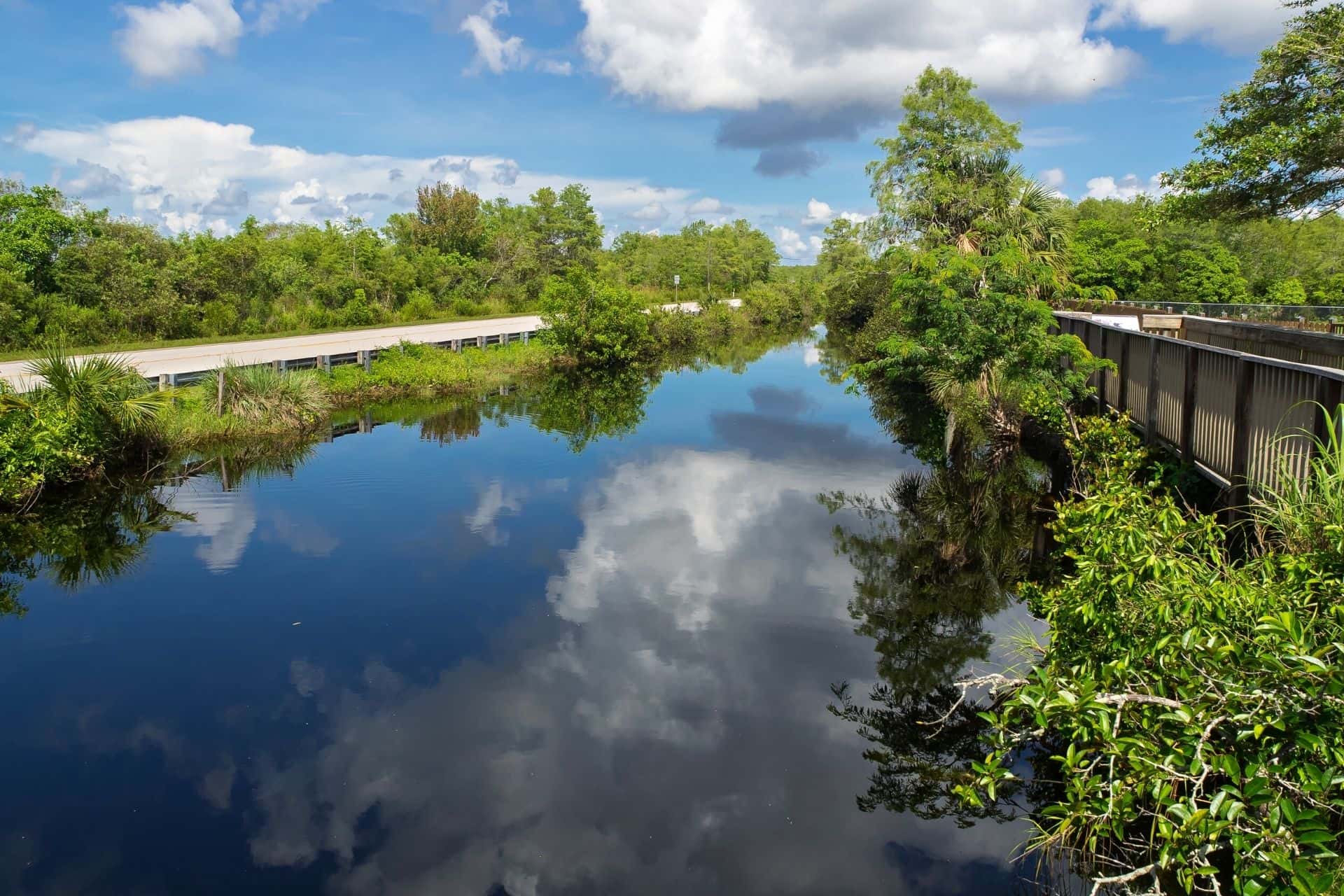
Next to the Visitor Center is a boardwalk, however, it is more like a viewing platform. It is a perfect spot to see lots of alligators and all kinds of birds / Things to Do in Big Cypress National Preserve
Miccosukee Indian Village
The next stop on the Tamiami Trail is the Miccosukee Indian Village. You can visit the Miccosukee Indian Gift Shop to find crafts created by natives around the world.
There is a museum that showcases Miccosukee’s history and culture preserved through historical documents, archival photographs, and original artifacts. In addition, there are alligator shows and airboat rides.
Intrepid Scout's Tips for Things to Do in Big Cypress National Preserve
- The last stop on the Tamiami Trail (U.S. Highway. 41) before you reach Miami is Shark Valley, which is part of Everglades National Park. It is definitely worth the stop!
The Shark Valley Trail is 15 miles round trip. However, you can rent a bike or jump on a tram. The trail ends in an observation tower that gives awesome views of the Everglades.
Intrepid Scout’s Tip:
READ: One Day in Everglades National Park (9 Places You Can’t Miss on First Visit)
- If you are planning on visiting Big Cypress National Preserve, then my recommendation is to plan your trip during the dry season. The best months for your visit would be November through March. There are better wildlife viewing opportunities, which congregate around reminding water reservoirs. Mosquitos and biting flies are at a minimum and make all outdoor activities pleasant. All the trails are dry and accessible, which will allow you to experience different habitats in Everglades.
- Make sure to slow down and make as many stops as possible. If you spot any bodies of water, then consider stopping since it might be an excellent opportunity to see wildlife.
- Make sure to have and use bug spray. Even if you are visiting during the dry season, my recommendation is to apply a generous amount of bug spray to protect yourself from mosquitos and ticks.
More Helpful Posts About Florida:
Romantic WEEKEND in MIAMI for COUPLES: Idyllic 3-Day Itinerary for Lovebirds
12 Insider MIAMI TIPS for FIRST-TIME VISITORS: Unlock a Spectacular Experience!
One Day in Everglades National Park (9 Places You Can’t Miss on First Visit)
3 Scenic Drives in Big Cypress National Preserve (Best Stops You Can’t Miss)
Did You Find This Useful?
Why Not Save Things to Do in Big Cypress National Preserve to Your Pinterest Board
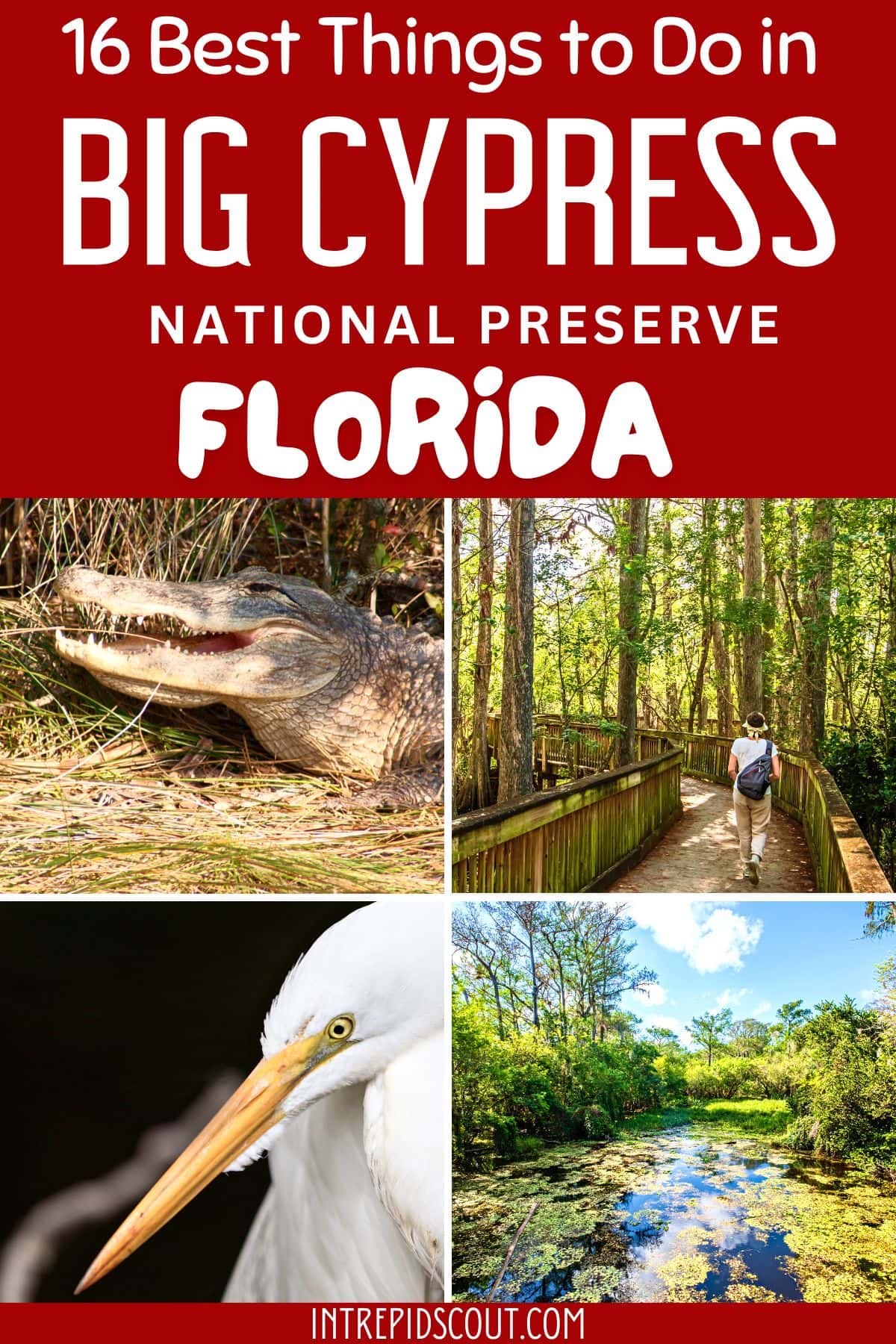
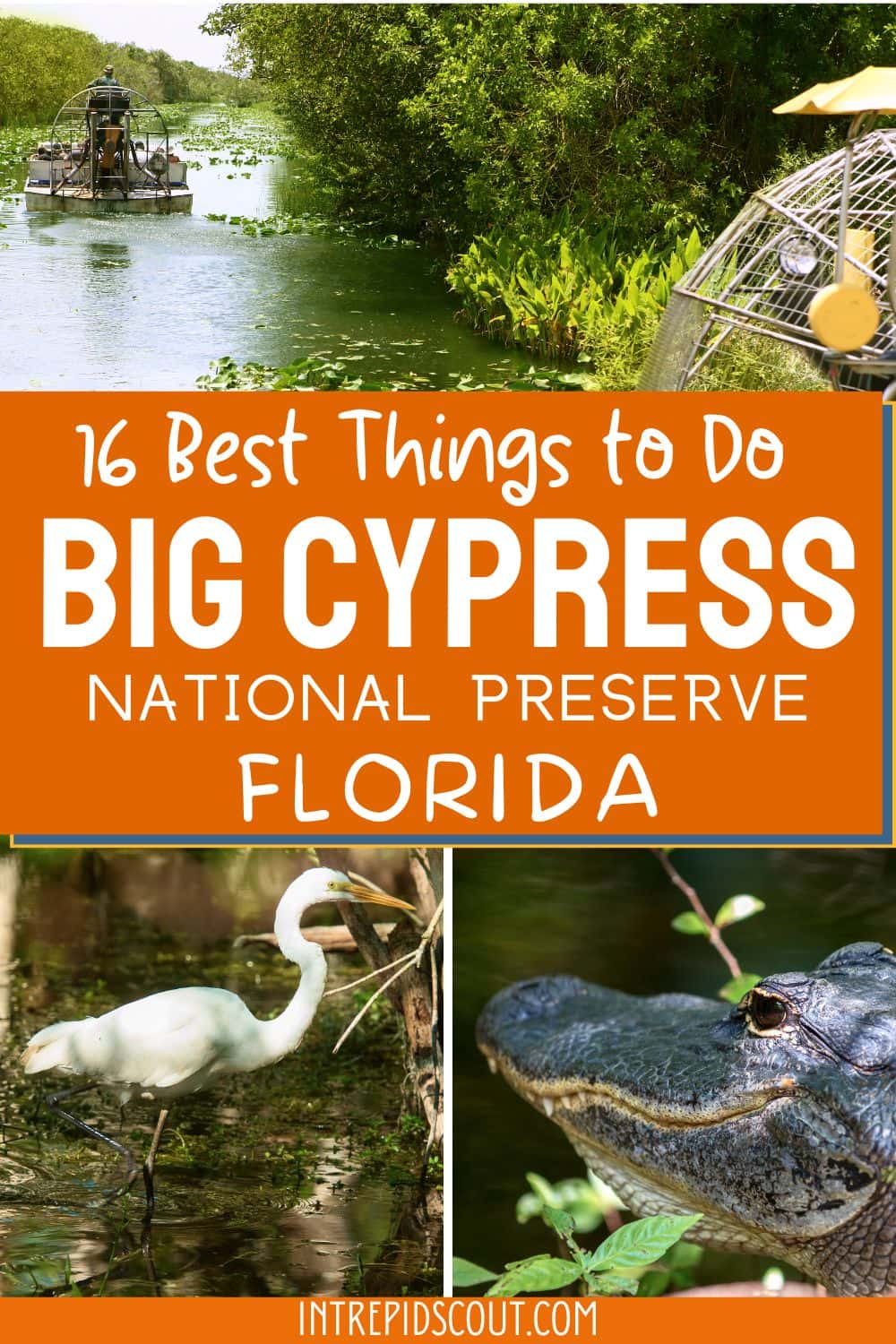
Now, It Is Your Turn, I Would Like to Hear Back from You!
Are you planning on visiting Big Cypress National Preserve?
Please let me know! Drop me a quick comment right below!
Click on any of the images below to get inspired and to help you with the planning process for your trip to Florida!
